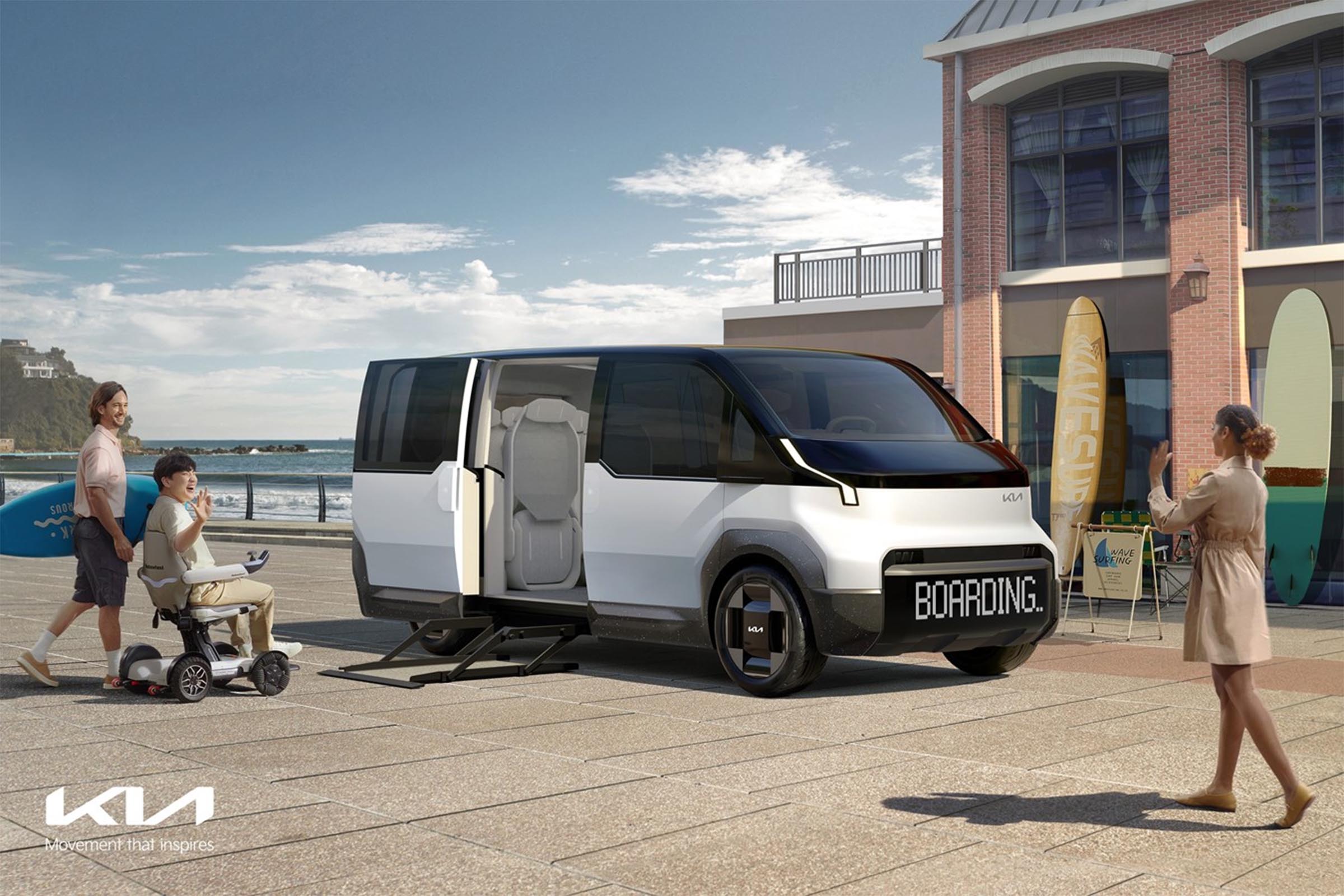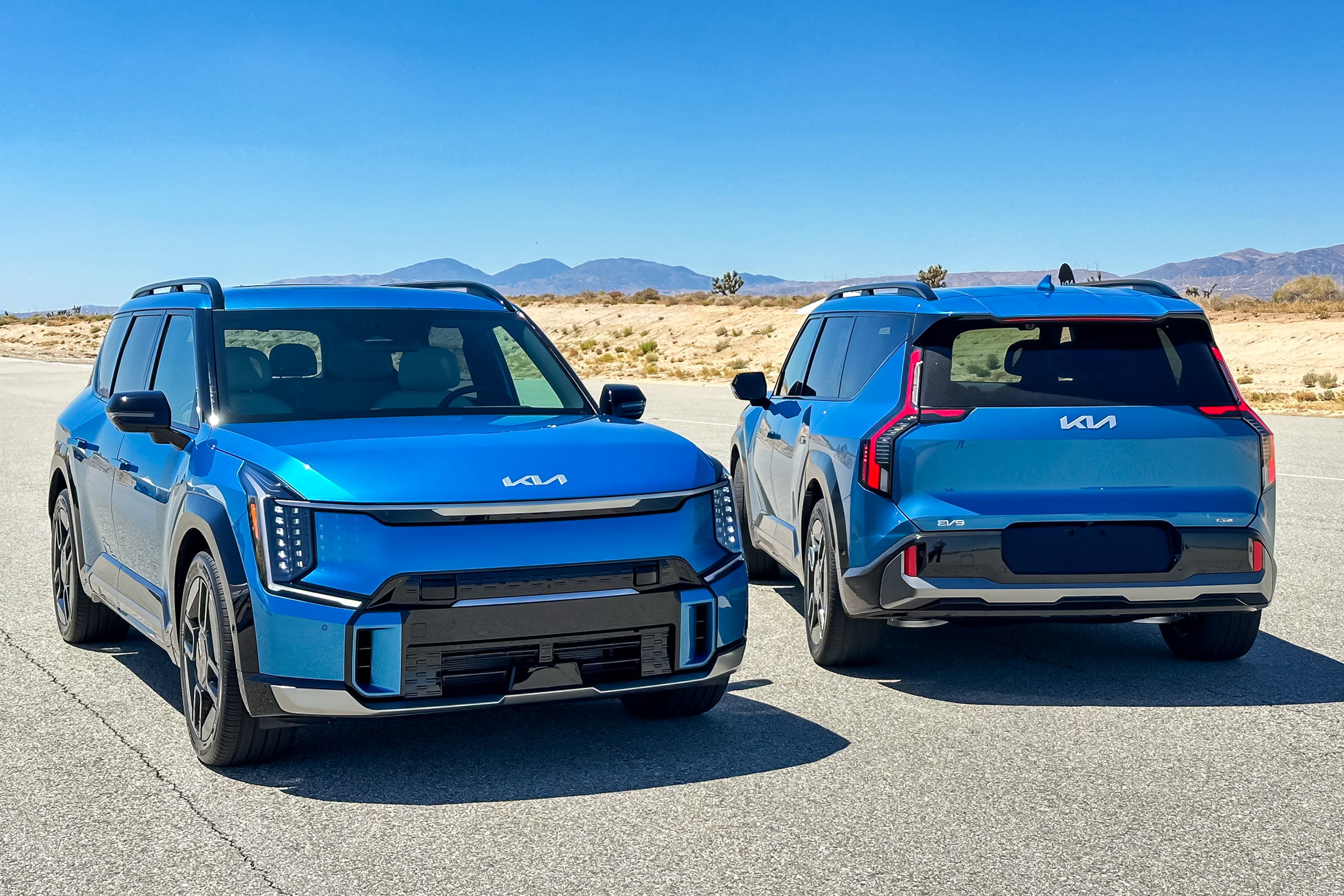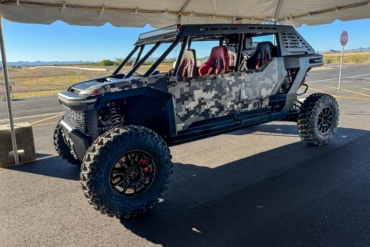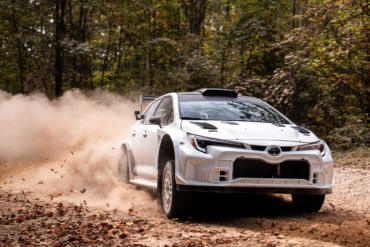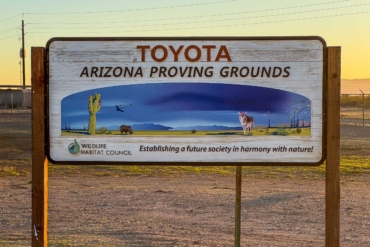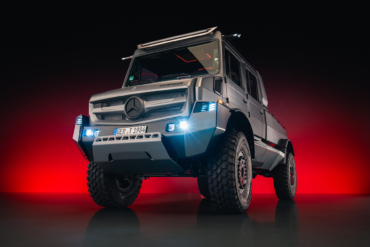The Korean automaker said production versions will follow, targeting everything from cargo hauling to ride sharing — and will even permit operators to interchange bodies for different purposes. Unlike most of today’s vehicles, the latest generation of battery-electric vehicles ride on skateboard-like platforms. That offers significant flexibility in terms of their size and purpose — or so Kia is demonstrating at this year’s Consumer Electronics Show (CES) in Las Vegas.
The automaker pulled the wraps off five concept vehicles, all sharing the same “Platform Beyond Mobility.”
The Korean carmaker laid out plans to put the modular new platform into production, outlining what it described as “a multi-phase plan with the goal of PBVs (platform beyond vehicles) revolutionizing the mobility industry.”
3-Phase Rollout

That would begin with the Kia PV5, which could serve tasks as diverse as cargo-hauling and ride-sharing, as well as a luxury van.
A variety of different models could be rolled out, including a van, a chassis cab, and a fully autonomous robotaxi, the automaker said in a statement ahead of its CES 2024 news conference.
“Kia’s PBV business represents our vision of going beyond the traditional concept of automobiles by fulfilling the unmet needs of diverse customers and communities through optimized vehicles and services catering to specific market and business circumstances,” said Ho Sung Song, Kia Corporation President and CEO.
Interchangeable Bodies
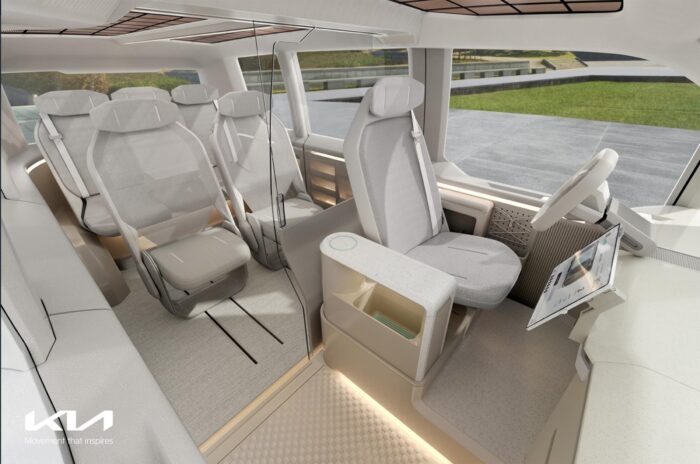
One of the more novel elements of the PBV program would allow the PV5 — and future models — to “fulfill multiple mobility needs.” That’s Kia-speak for allowing the modular platform to mix and match interchangeable bodies behind a fixed cab using electromagnetic and mechanical couplers.
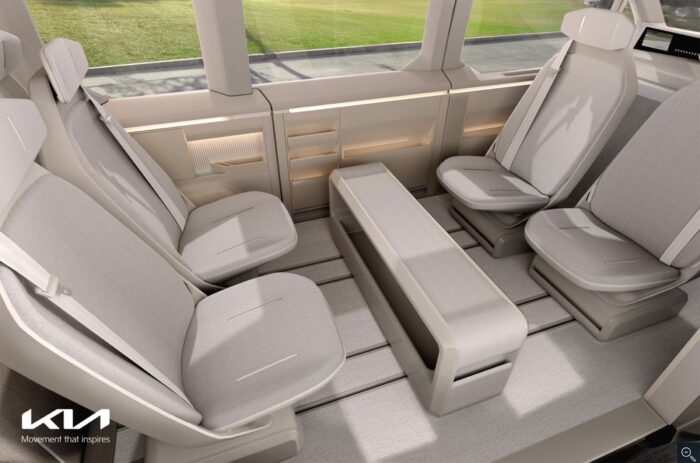
The automaker refers to them as “life modules.” It says the same vehicle could be used as “a taxi during the day, to a delivery van at night, and a personal recreational vehicle on weekends.”
More Models to Come
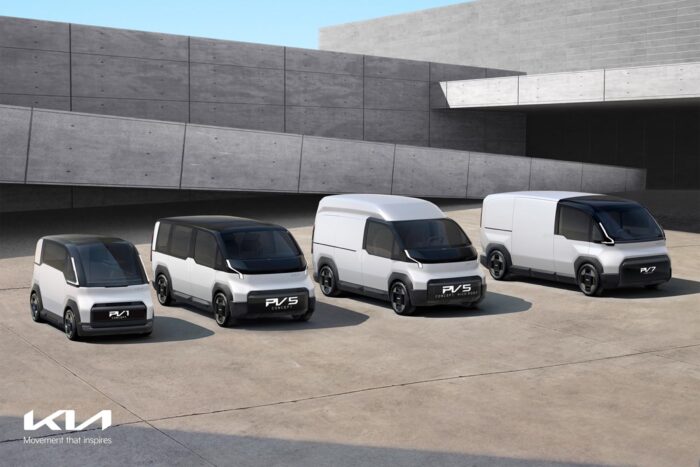
Kia would subsequently expand the Platform Beyond line Mobility lineup with the downsized PV1, which it said would primarily serve as a short-haul delivery van. By placing batteries and motors below the load floor, the skateboard-like architecture would provide more interior space than comparable gas- and diesel-powered models.
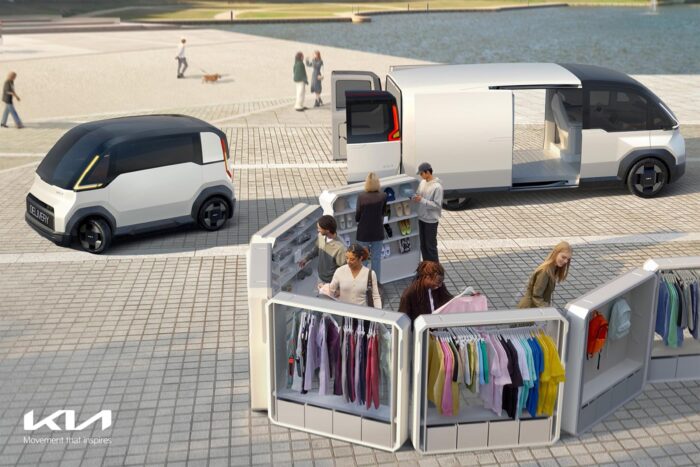
Phase 2 also would see the addition of the PV7, the largest model in the lineup. It would offer both extended range — thanks to an oversized battery pack — and additional cargo capacity.
A third phase would see even more variants introduced, Kia said.
Kia PBV Production Plans
“Kia PBVs will initiate a new era of seamless everyday business and lifestyle solutions. We hope to make our customers’ lives easier and better, whether they’re stationary or on the move, offering exceptional flexibility and customization through radical modularization,” said Karim Habib, Executive Vice President and Head of Kia Global Design.
Plans call for Kia to set up a PBV-dedicated assembly plant in Hwaseong, South Korea, capable of producing up to 150,000 vehicles annually. It’s scheduled to go into operation in 2025.
